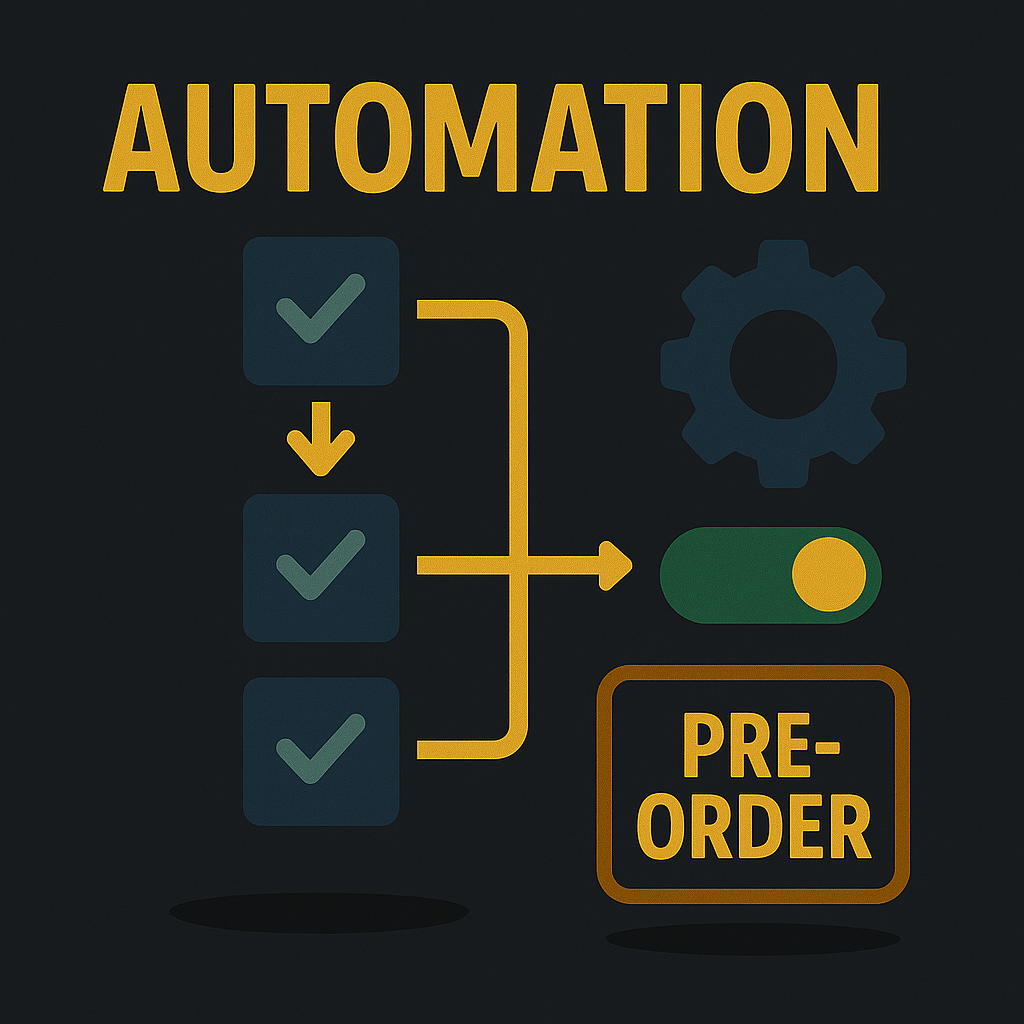Want to see a video instead? Click here to watch Oli talk through pre-orders on the variant level.
Introduction
The global retail industry loses an estimated $1.75 trillion annually due to stockouts (ref). For e-commerce stores selling products with multiple variants—sizes, colors, styles—this problem becomes even more critical. When a customer’s preferred size is out of stock, they don’t just abandon that variant; they often abandon the entire purchase.
But what if you could capture those lost sales? What if running out of Medium t-shirts or Shade #3 lipstick didn’t mean losing revenue? The solution lies in variant-level pre-orders, a strategy that turns stockouts into sales opportunities.

The Hidden Cost of Variant Stockouts
When you order inventory, buyers estimate demand across all variants. Despite their expertise, it’s nearly impossible to predict exactly how many size Large vs. Medium items will sell. This leads to:
- Uneven inventory depletion: Some variants sell out while others gather dust
- Lost sales opportunities: Customers leave empty-handed when their size is unavailable
- Abandoned carts: The “almost perfect” scenario where everything except size is right
- Increased discounting: Overstocked variants require markdowns to clear
The psychology is clear: customers will wait for their perfect product if given the option. The key is offering that option seamlessly. …and luckily for us, they’ve often happy to wait longer for the perfect option.
Manual Variant Pre-Order Setup
Approach 1: Manual Variant Pre-Order Setup
The simplest approach involves manually enabling pre-orders for specific out-of-stock variants:
- Identify stockout patterns: Monitor which variants consistently sell out first
- Enable selective pre-orders: Use tools like PreProduct to enable pre-orders only for out-of-stock variants
- Set clear expectations: Display estimated restock dates and shipping timelines
- Maintain in-stock sales: Keep functioning variants as “Buy Now” while only out-of-stock variants show “Pre-Order”
This mixed approach means customers see “Buy Now” for available sizes and “Pre-Order” for their preferred size if it’s out of stock, rather than seeing “Sold Out” and leaving.

Approach 2: Automated Variant Pre-Order Solutions
For larger catalogs or lean teams, automation provides scalable solutions:
- Inventory automations: Use an automation like PreProduct’s Listing Manager to enable pre-orders automatically when variants hit zero stock
- Template-based rules: Set up conditional logic (tags, product types, seasonal items)
- Batch management: Organize by shipment dates or product seasons
Automation works best for established stores with predictable restock patterns and larger product catalogs where manual management becomes unmanageable.

The Approach
Best Practices for Variant Pre-Orders
Always show delivery estimates: Customers need to know they’re placing an actual order, not joining a wishlist. Clear restock dates build confidence.
Create urgency through scarcity: Use the fact that variants sold out to create urgency: “Pre-order now to secure your size—this style sells out fast.”
Offer pre-order incentives: Consider “Pre-order today and save 10%” to compensate for the wait and encourage immediate action.
Smart messaging: Use variant-specific messaging that acknowledges the stockout while positioning pre-order as the smart choice.
When to Use Manual vs. Automated Approaches
Start with manual if you’re:
- Testing pre-orders for the first time
- Working with a small product catalog
- Need tight control over which products accept pre-orders
- Testing a new pre-order app
- Discontinuing certain variants
Move to automated when you’re:
- Managing hundreds or thousands of variants
- Experiencing frequent stockouts across multiple products
- Working with a lean team
- Confident in your pre-order process
Real-World Impact
Stores implementing variant-level pre-orders capture sales that would otherwise be lost to stockouts. Instead of customers leaving when their size is unavailable, they place pre-orders, securing revenue and maintaining customer relationships.
Consider a fashion brand with 20 products, each in 6 sizes. Without variant pre-orders, selling out of even 2 sizes per product means losing potential potential sales from 40 different SKUs. With variant pre-orders, those stockouts become revenue opportunities.
Implementation with PreProduct
PreProduct offers both manual and automated approaches for variant pre-orders:
- Manual control: Enable pre-orders for specific variants while keeping others as regular sales
- Automated triggers: Set up the listing manager or use Shopify Flow to automatically enable pre-orders when variants go out of stock
- Template system: Create reusable settings for different product types or seasons
- Multi-platform support: Works across Shopify, BigCommerce, and WooCommerce
The platform includes features like estimated delivery dates, mixed cart capabilities (in-stock + pre-order items), and customer communication tools to optimize the pre-order experience.
Conclusion
Variant stockouts don’t have to mean lost sales. By implementing variant-level pre-orders—whether manually or through automation—you can capture revenue that would otherwise disappear. The key is giving customers the option to wait for their perfect product rather than forcing them to choose between a compromise and leaving empty-handed.
The technology exists today to turn every stockout into a sales opportunity. The question isn’t whether you can afford to implement variant pre-orders; it’s whether you can afford not to.

Oli Woods
Co-founder @PreProduct
